Muhammad Mubasshir Shaikh
Multi-instrument analysis of L-band amplitude scintillation observed over the Eastern Arabian Peninsula
May 23, 2024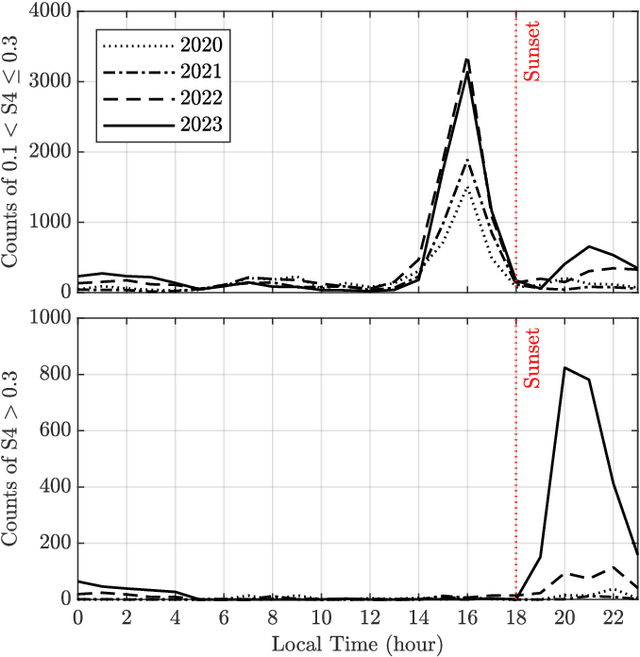
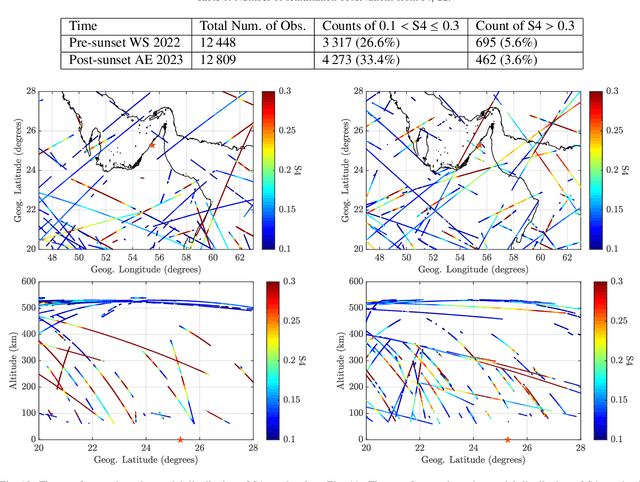
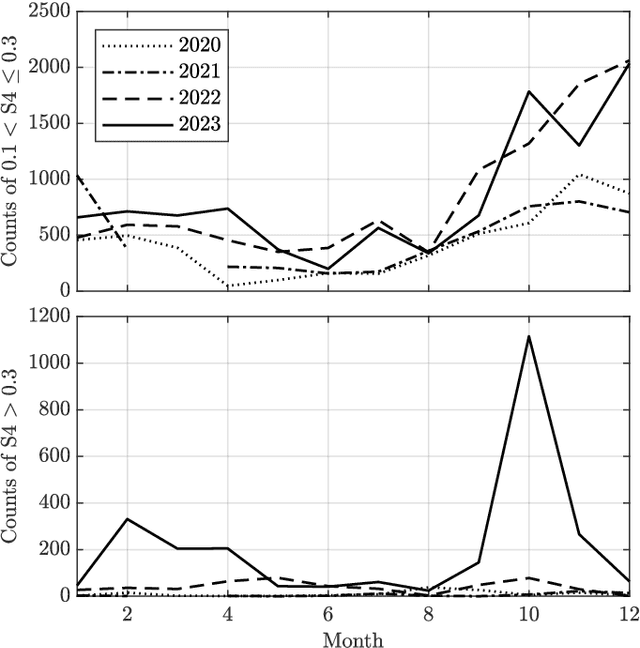

Abstract:This study investigates the spatial and temporal characteristics of L1 amplitude scintillation-causing ionospheric irregularities over the Eastern Arabian Peninsula during the ascending phase of solar cycle 25 (years 2020--2023). The temporal occurrences of weak and strong scintillation were separated by sunset, with weak scintillation observed predominantly pre-sunset during the winter solstice and strong scintillation observed mainly post-sunset during the autumnal equinox. Strong scintillation was much more pronounced in 2023 compared to the other three years, indicating a strong influence of solar activity. Spatially, weak-scintillation-causing irregularities exhibited a wide distribution in azimuth and elevation, while strong-scintillation-causing irregularities were concentrated southwards. The combined analysis of S4 and rate of total electron content index (ROTI) suggested that small-scale ionospheric irregularities were present in both pre- and post-sunset periods, while large-scale irregularities were only seen during the post-sunset period. Furthermore, the presence of southward traveling ionospheric disturbances (TIDs) during the 2023 autumnal equinox was confirmed with the total electron content anomaly ($\Delta\text{TEC}$), while the Ionospheric Bubble Index (IBI) provided by the Swarm mission was unable to confirm the presence of equatorial plasma bubbles during the same period. Observations from the FORMOSAT-7/COSMIC-2 mission indicated that strong-scintillation-causing irregularities were more prevalent under the F2-layer peak, while the weak-scintillation-causing irregularities were mostly observed at the E-layer, F2-layer, and above the F2-layer.
Martian Ionosphere Electron Density Prediction Using Bagged Trees
Nov 03, 2022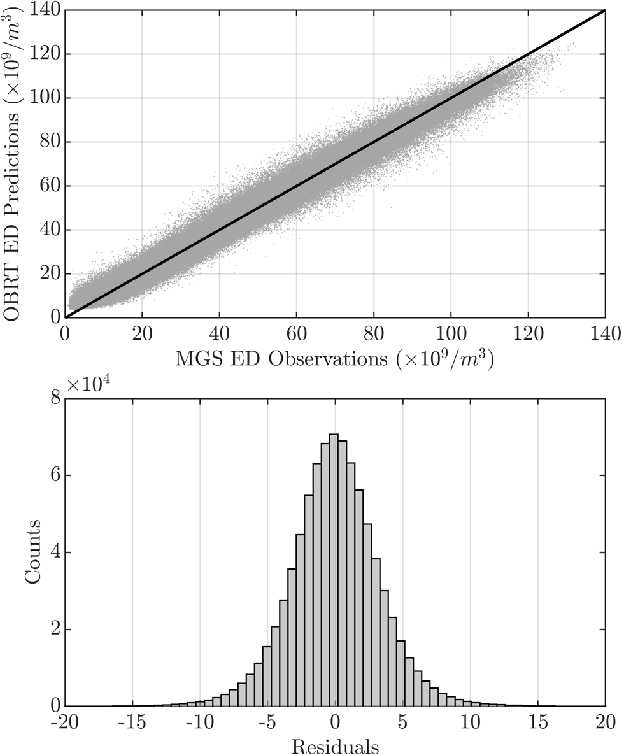
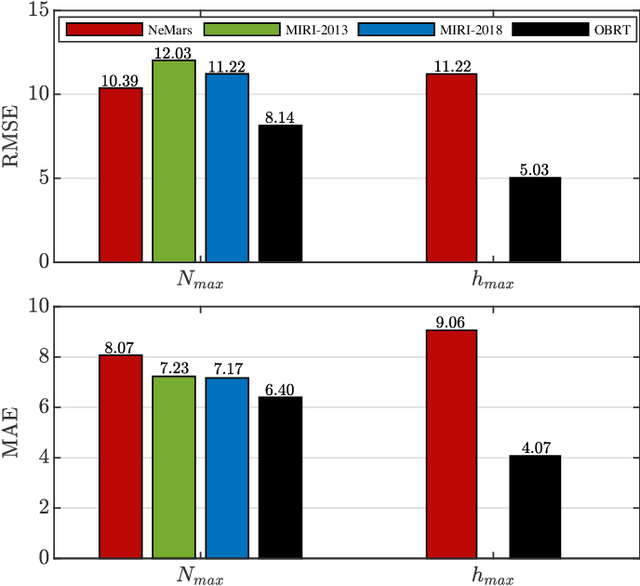
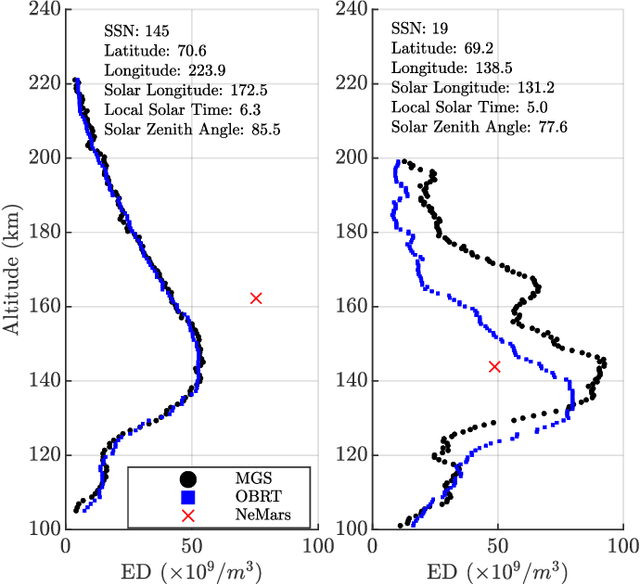
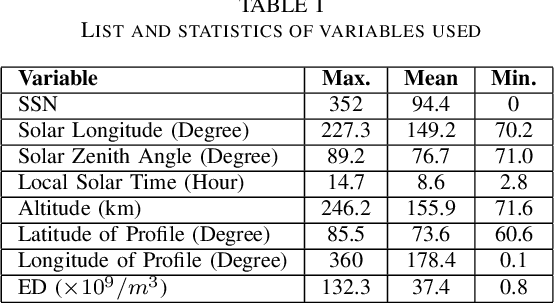
Abstract:The availability of Martian atmospheric data provided by several Martian missions broadened the opportunity to investigate and study the conditions of the Martian ionosphere. As such, ionospheric models play a crucial part in improving our understanding of ionospheric behavior in response to different spatial, temporal, and space weather conditions. This work represents an initial attempt to construct an electron density prediction model of the Martian ionosphere using machine learning. The model targets the ionosphere at solar zenith ranging from 70 to 90 degrees, and as such only utilizes observations from the Mars Global Surveyor mission. The performance of different machine learning methods was compared in terms of root mean square error, coefficient of determination, and mean absolute error. The bagged regression trees method performed best out of all the evaluated methods. Furthermore, the optimized bagged regression trees model outperformed other Martian ionosphere models from the literature (MIRI and NeMars) in finding the peak electron density value, and the peak density height in terms of root-mean-square error and mean absolute error.
Amplitude Scintillation Forecasting Using Bagged Trees
Jul 18, 2022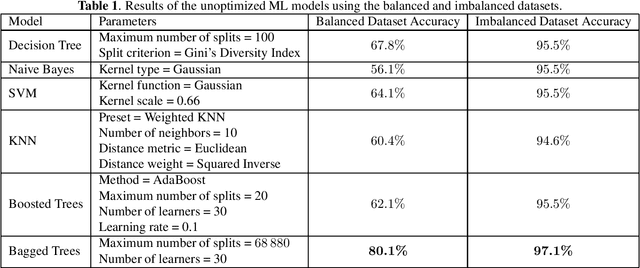

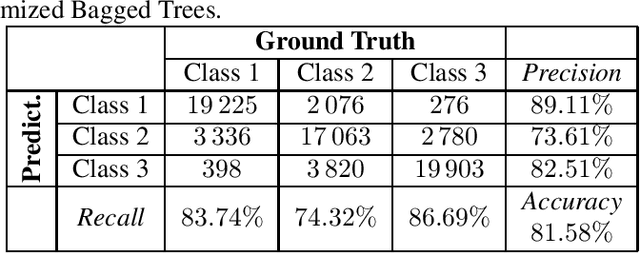
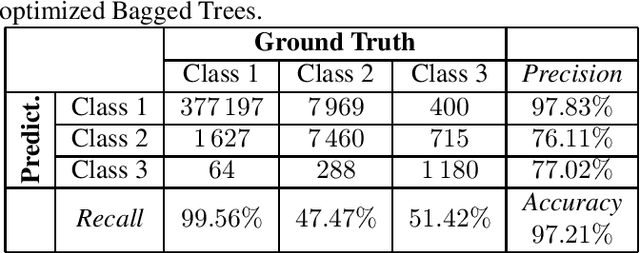
Abstract:Electron density irregularities present within the ionosphere induce significant fluctuations in global navigation satellite system (GNSS) signals. Fluctuations in signal power are referred to as amplitude scintillation and can be monitored through the S4 index. Forecasting the severity of amplitude scintillation based on historical S4 index data is beneficial when real-time data is unavailable. In this work, we study the possibility of using historical data from a single GPS scintillation monitoring receiver to train a machine learning (ML) model to forecast the severity of amplitude scintillation, either weak, moderate, or severe, with respect to temporal and spatial parameters. Six different ML models were evaluated and the bagged trees model was the most accurate among them, achieving a forecasting accuracy of $81\%$ using a balanced dataset, and $97\%$ using an imbalanced dataset.
 Add to Chrome
Add to Chrome Add to Firefox
Add to Firefox Add to Edge
Add to Edge